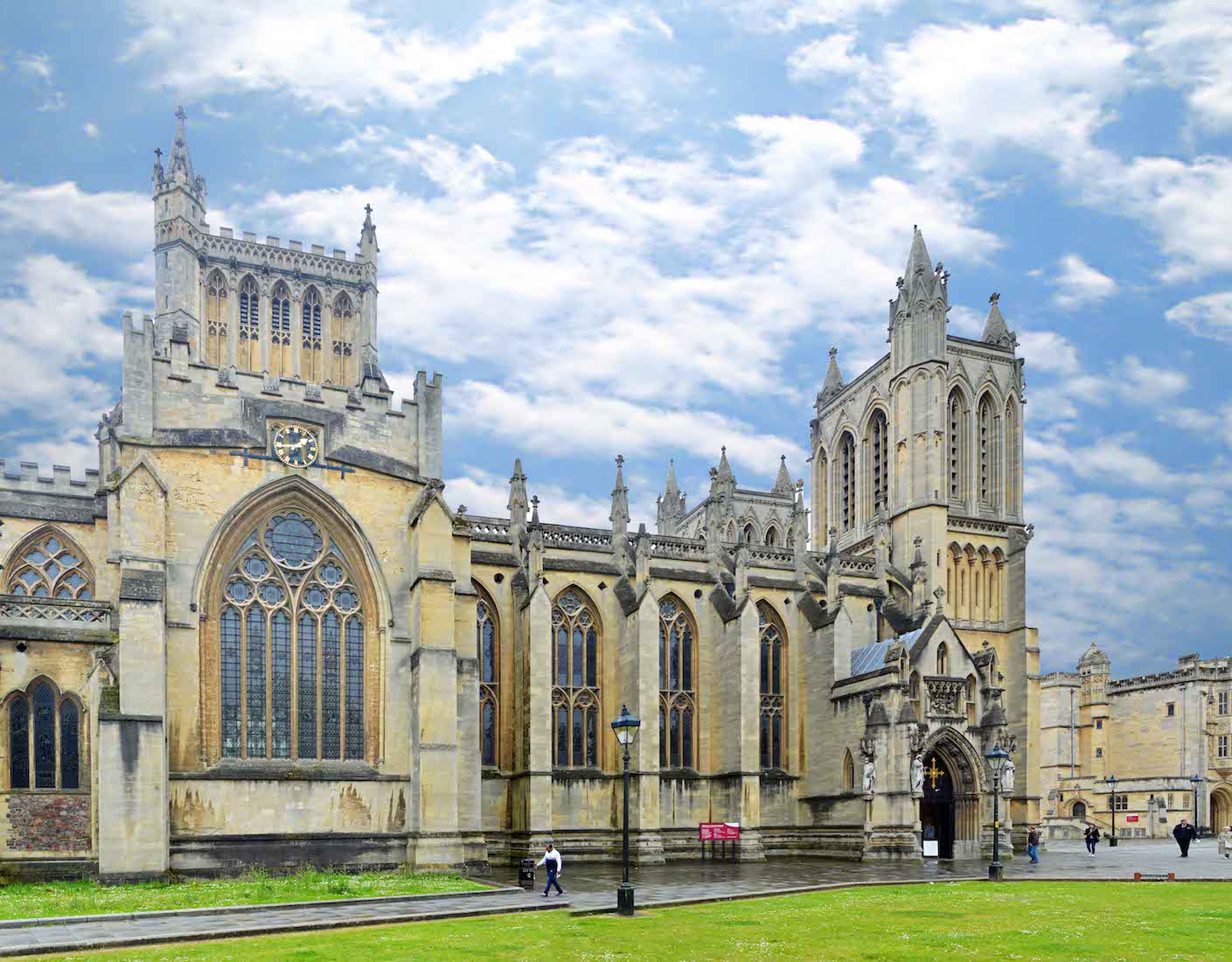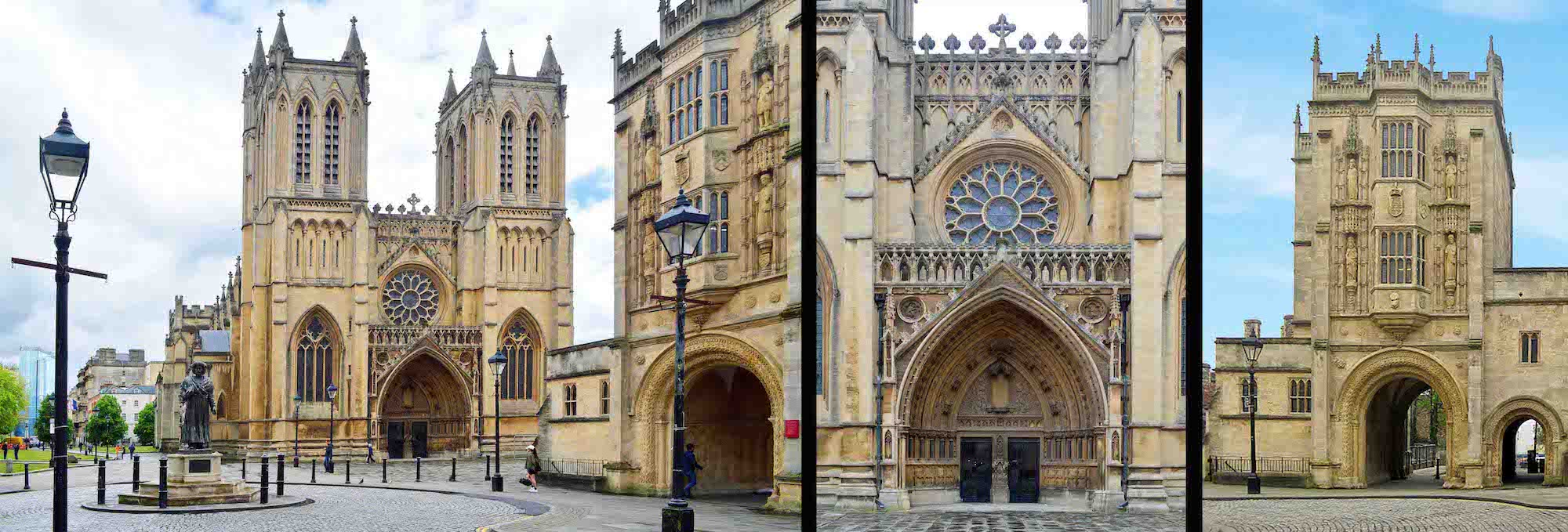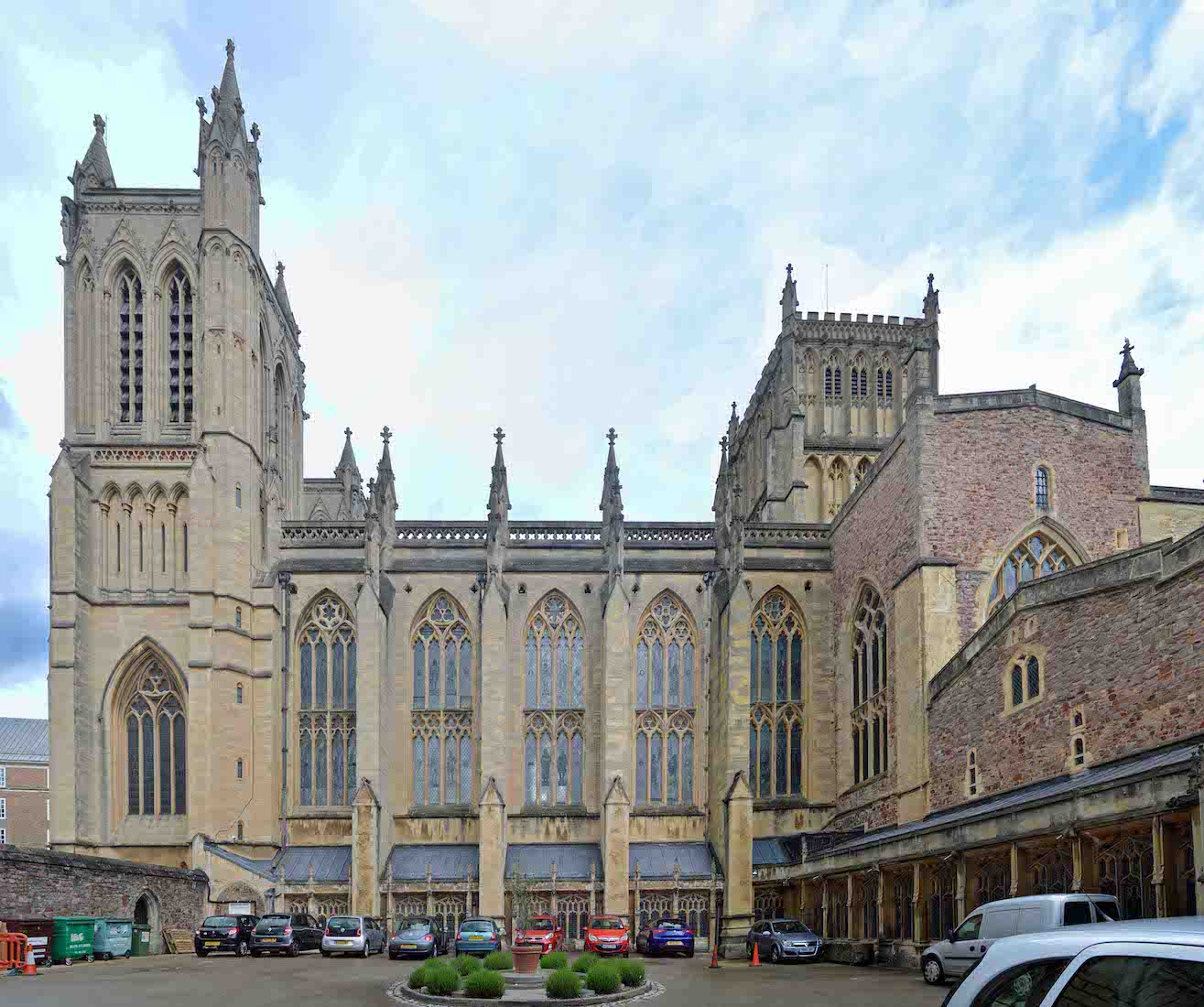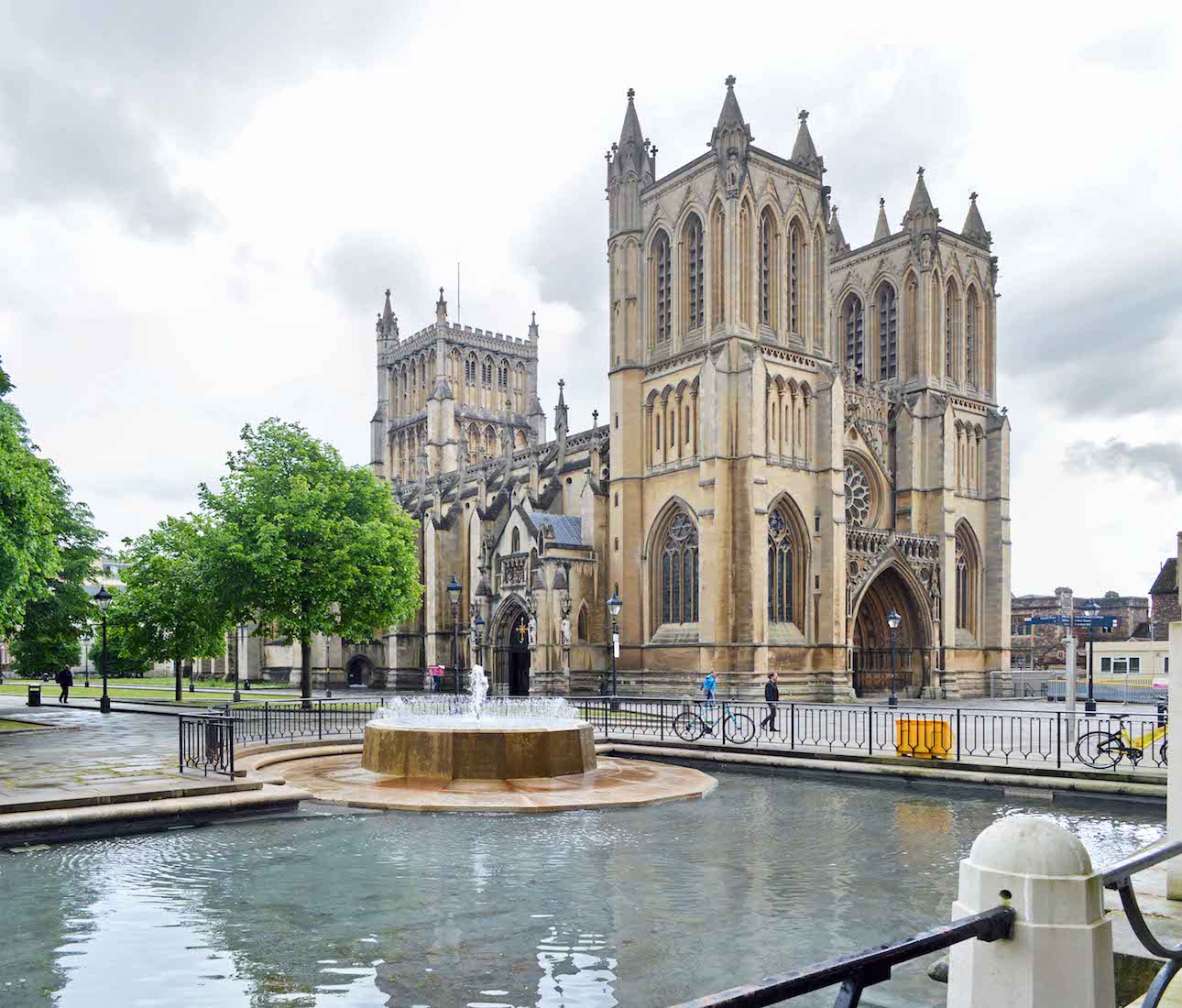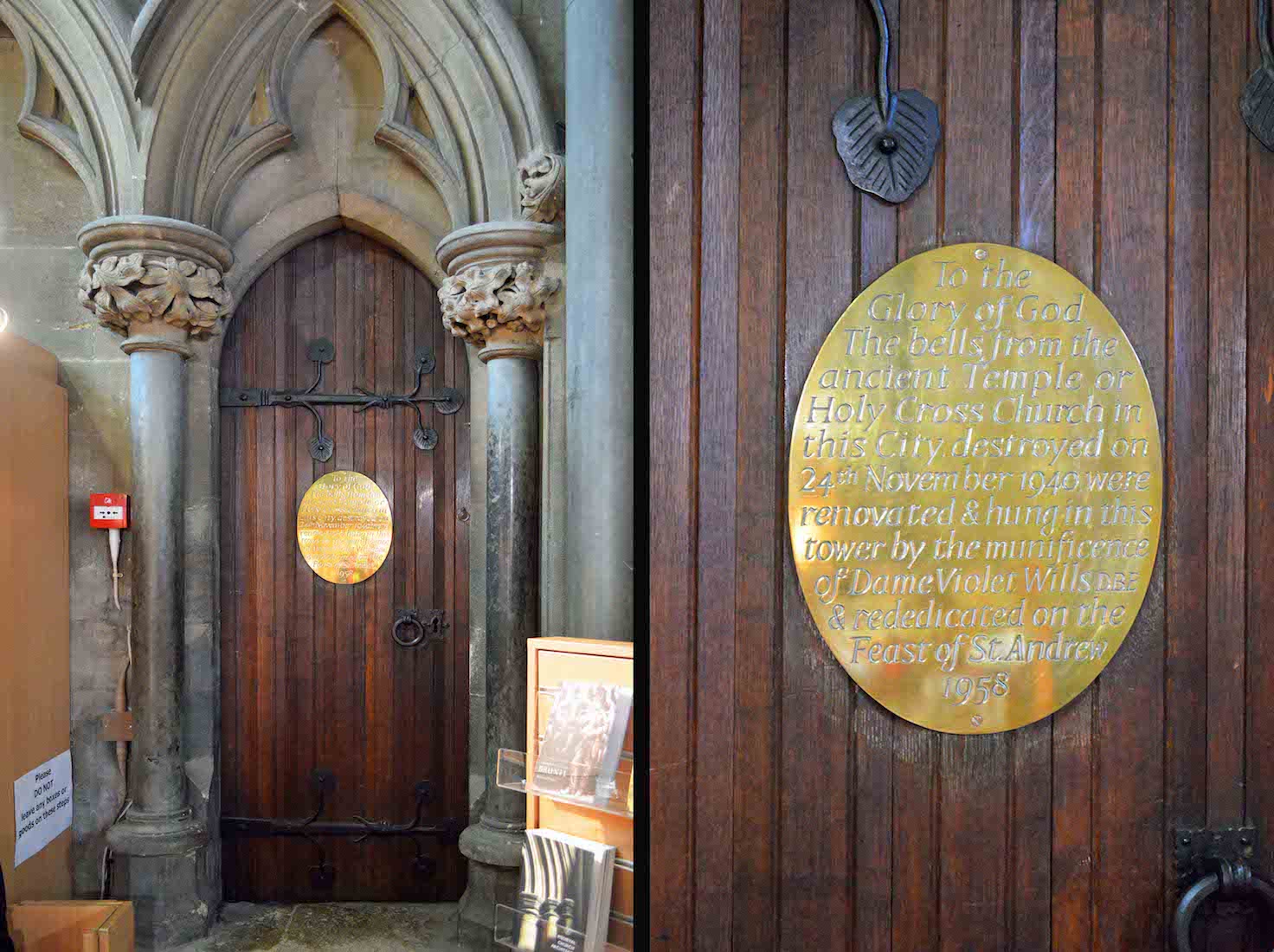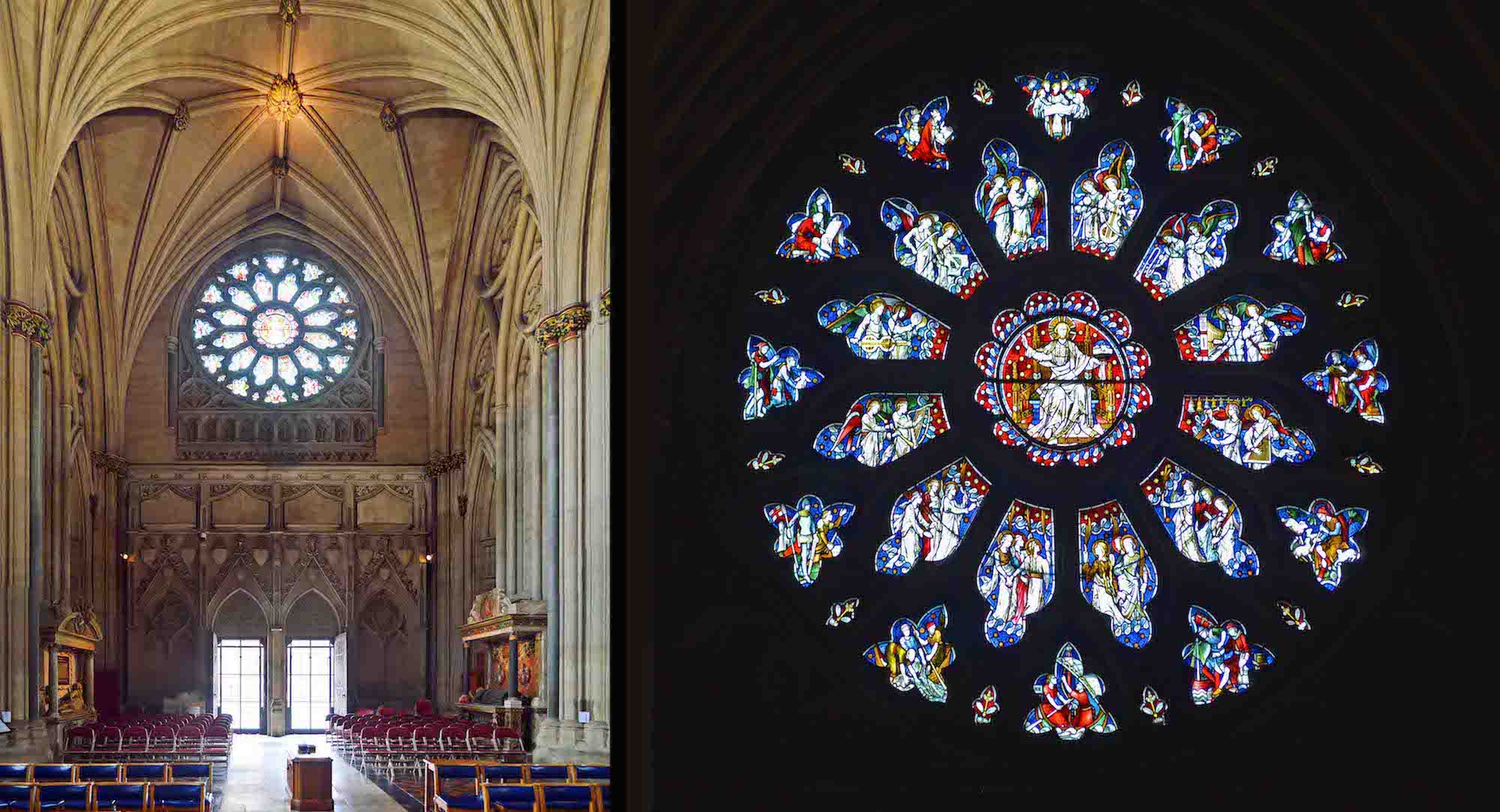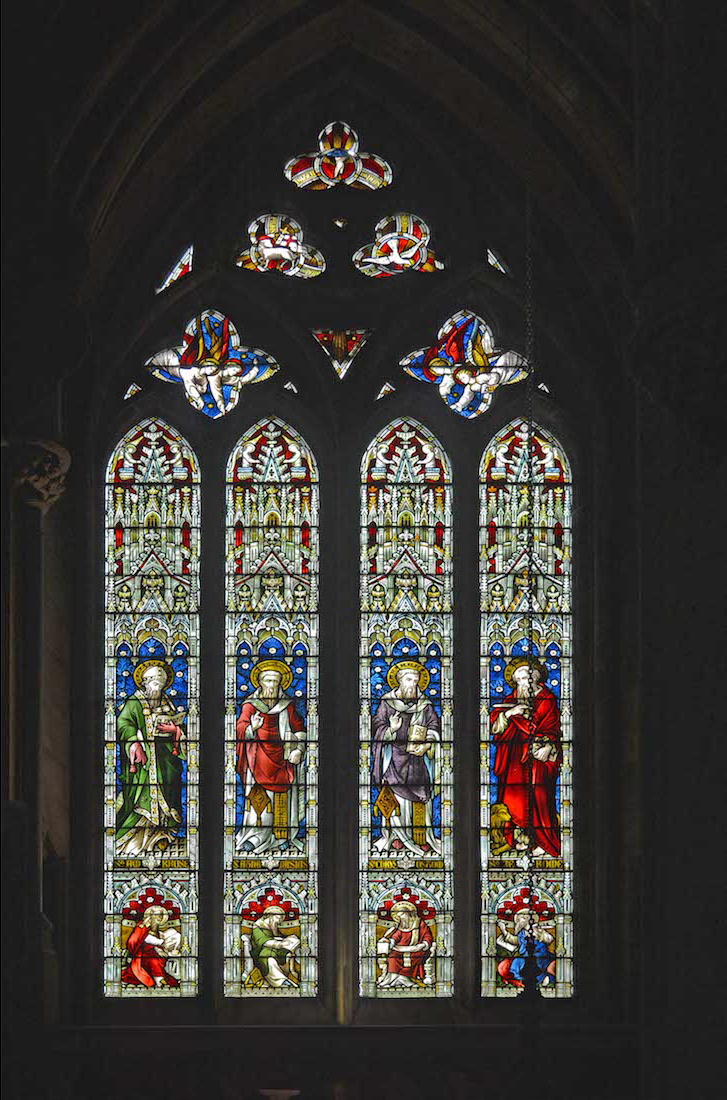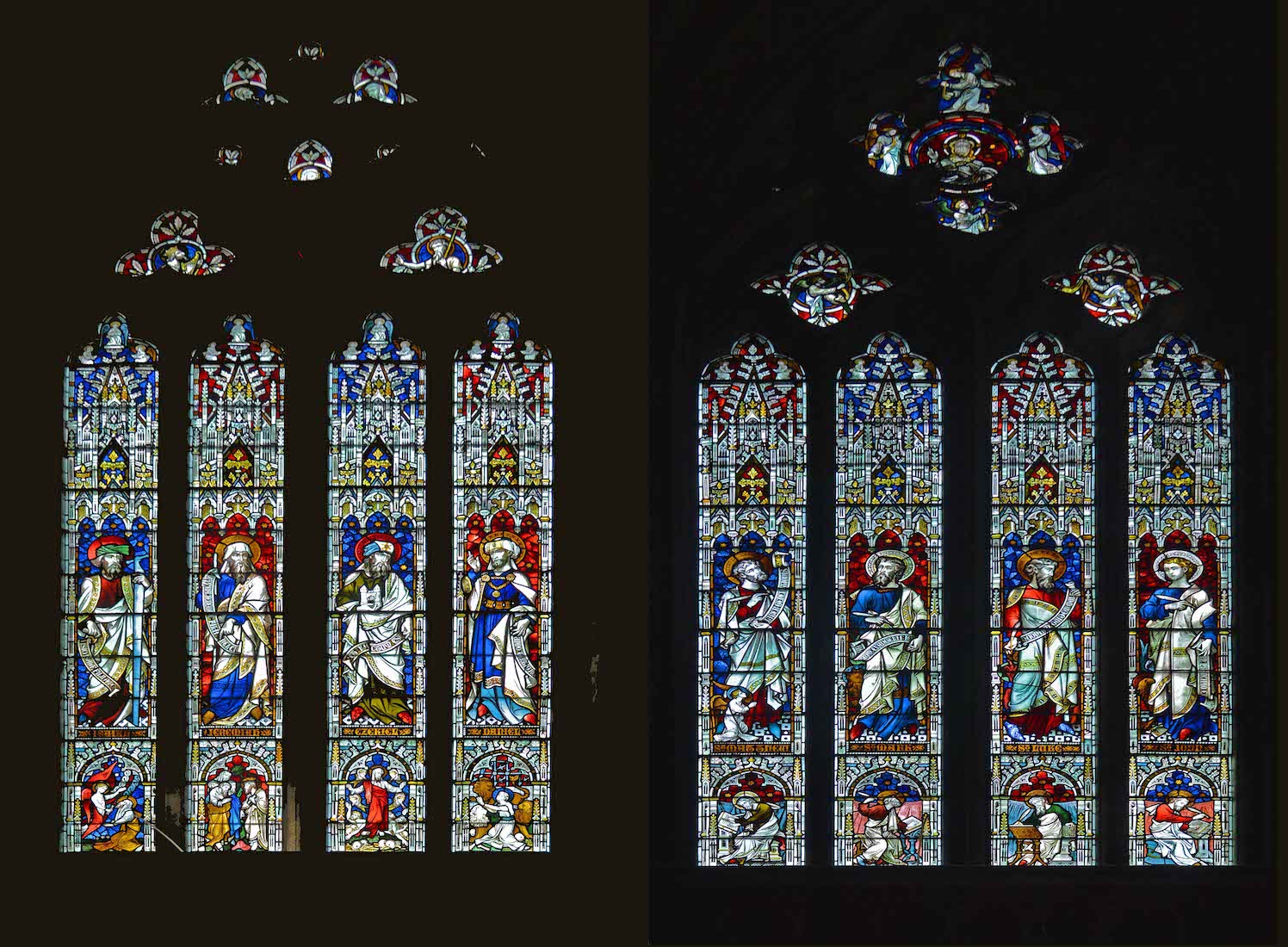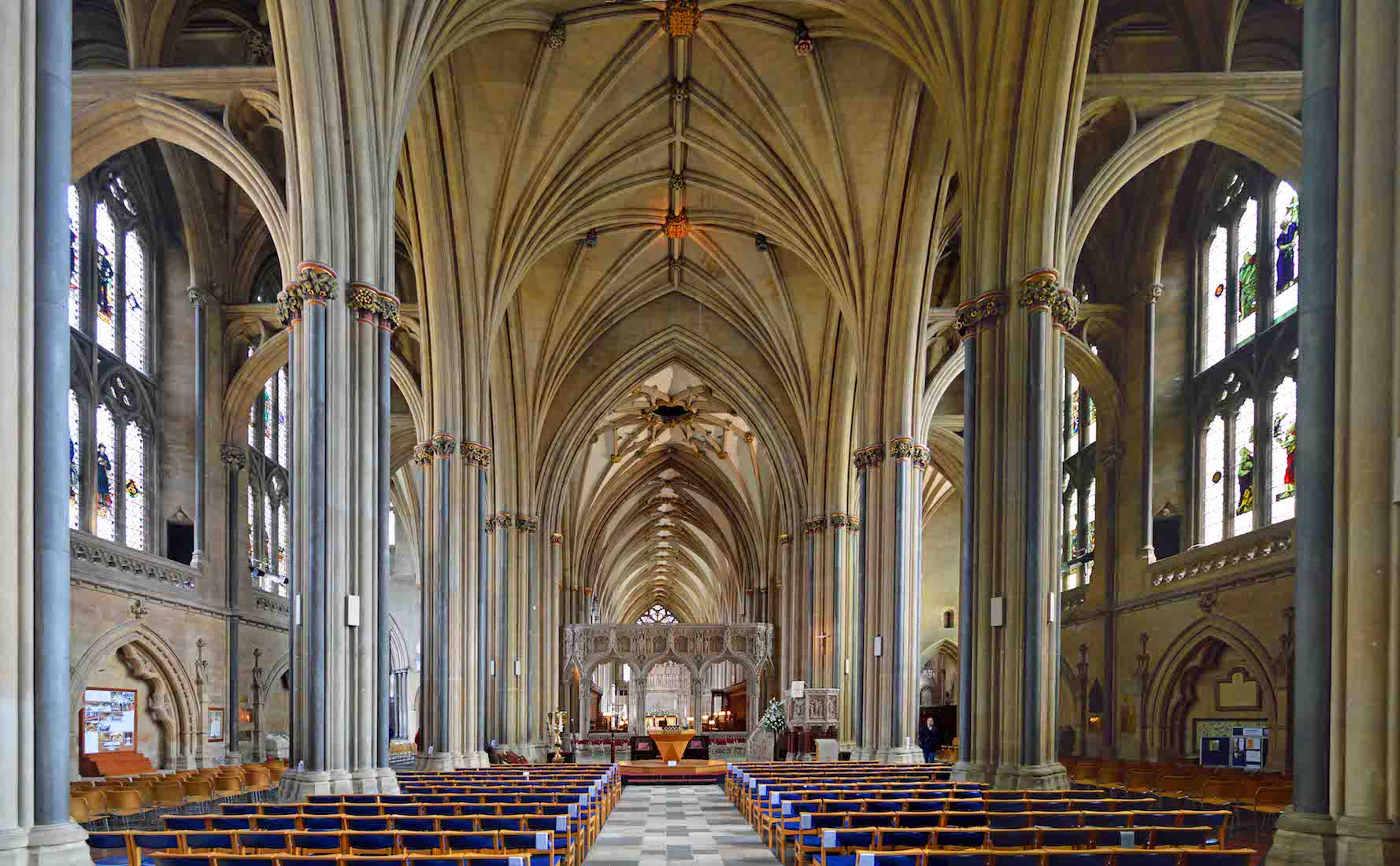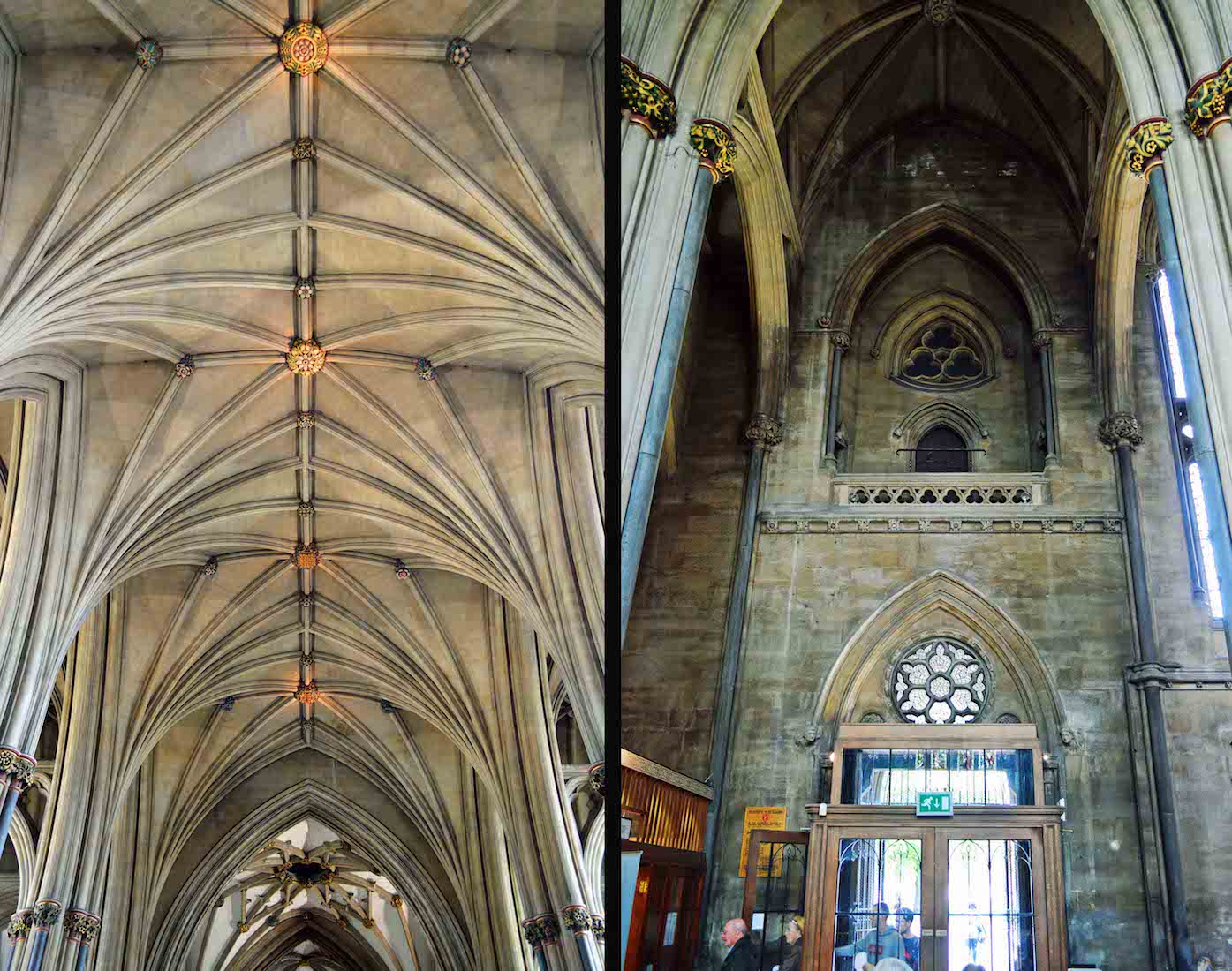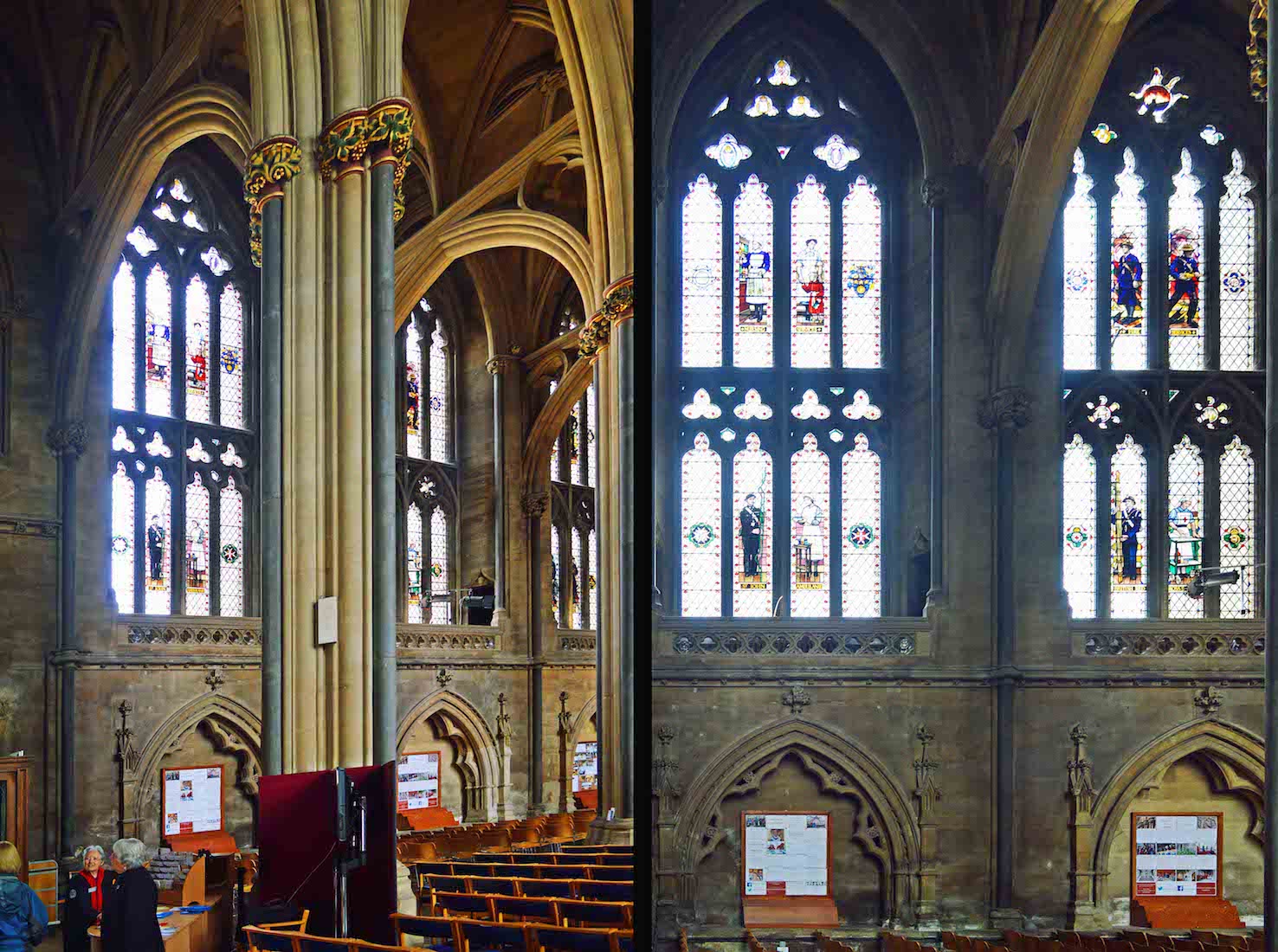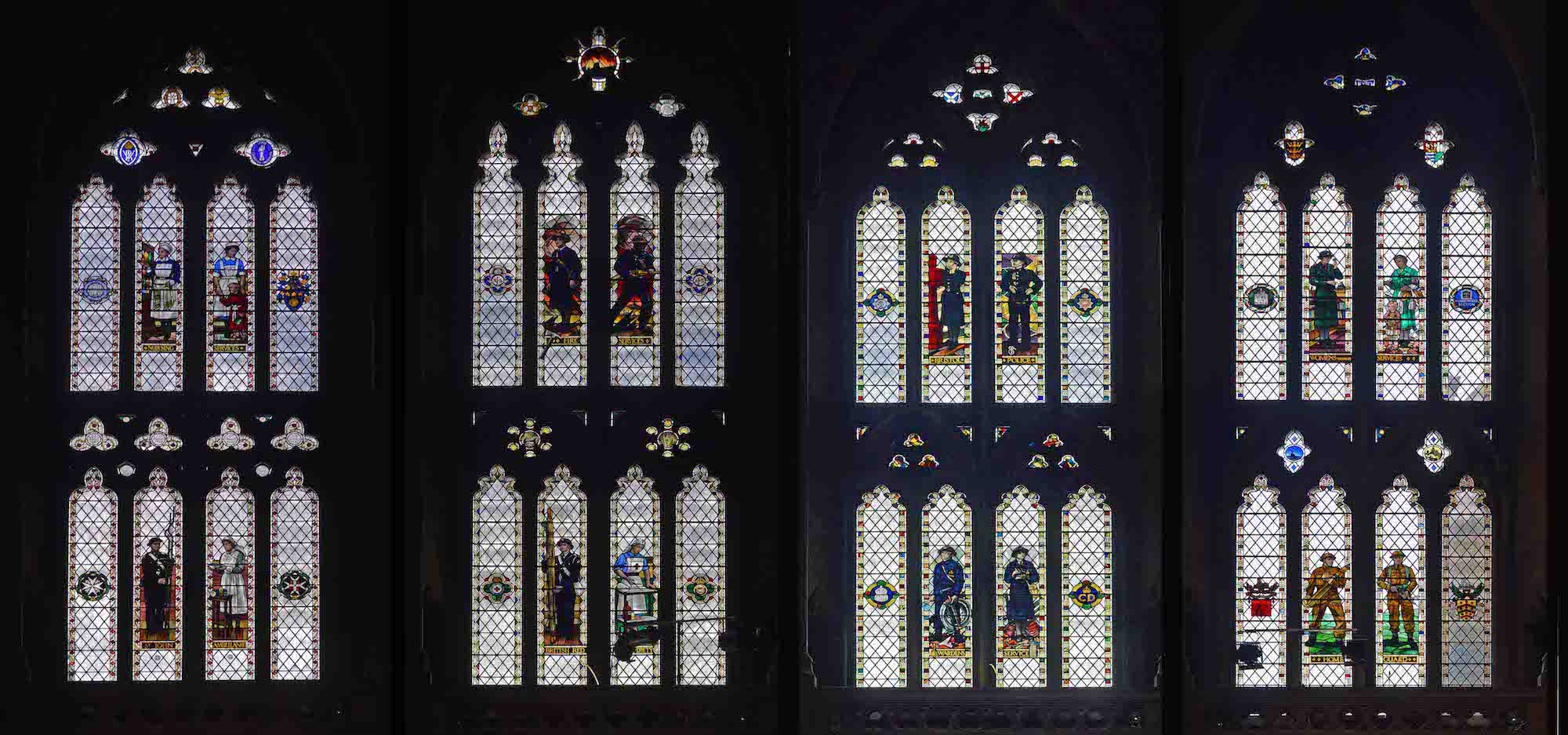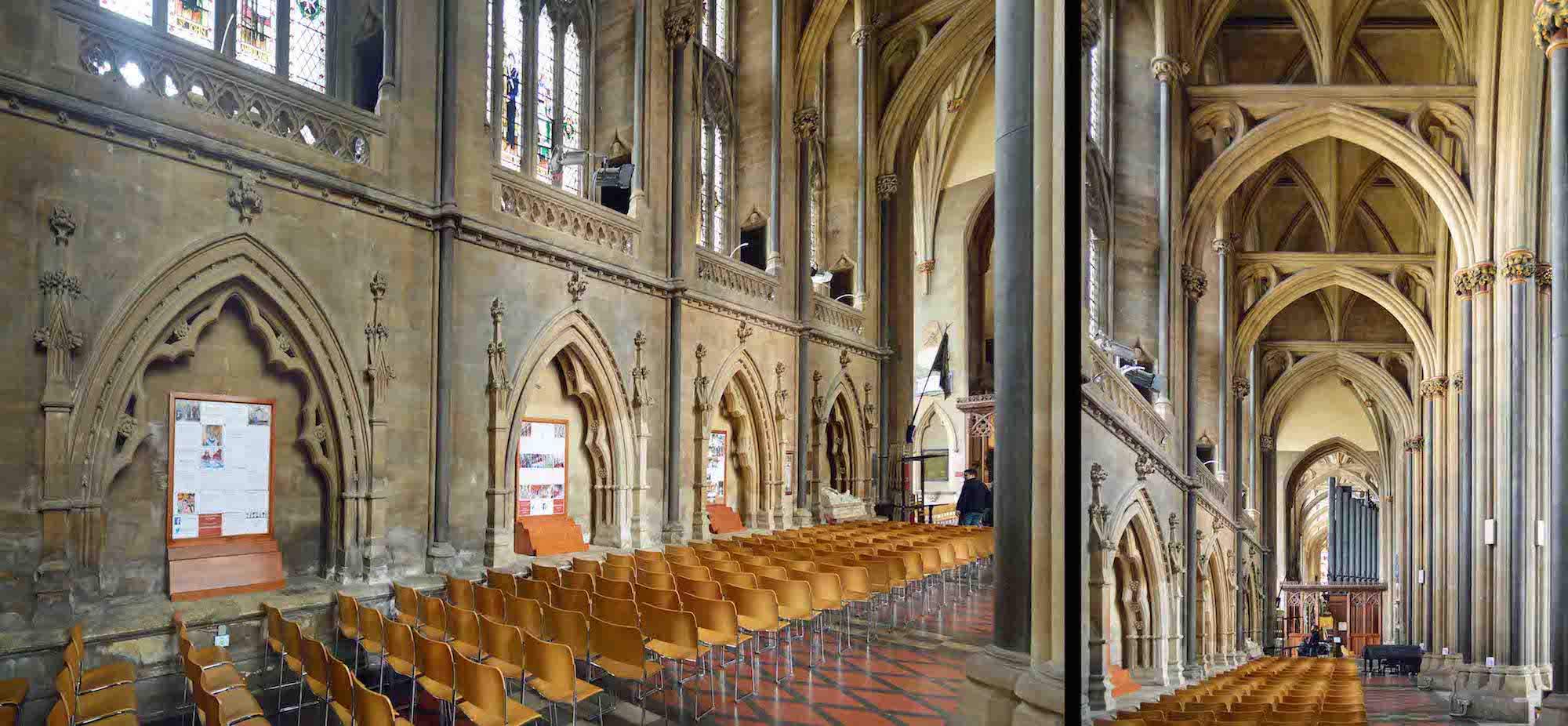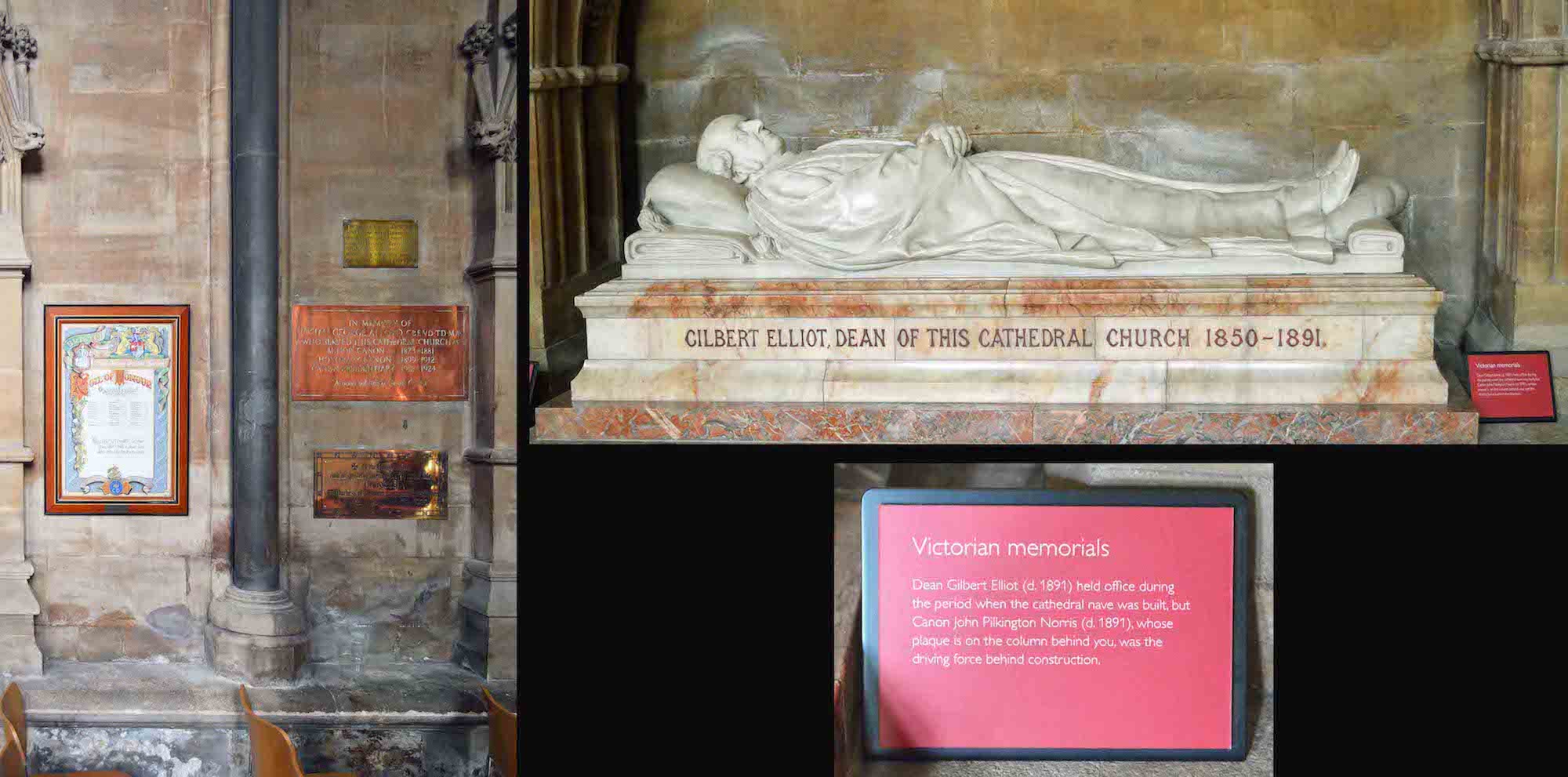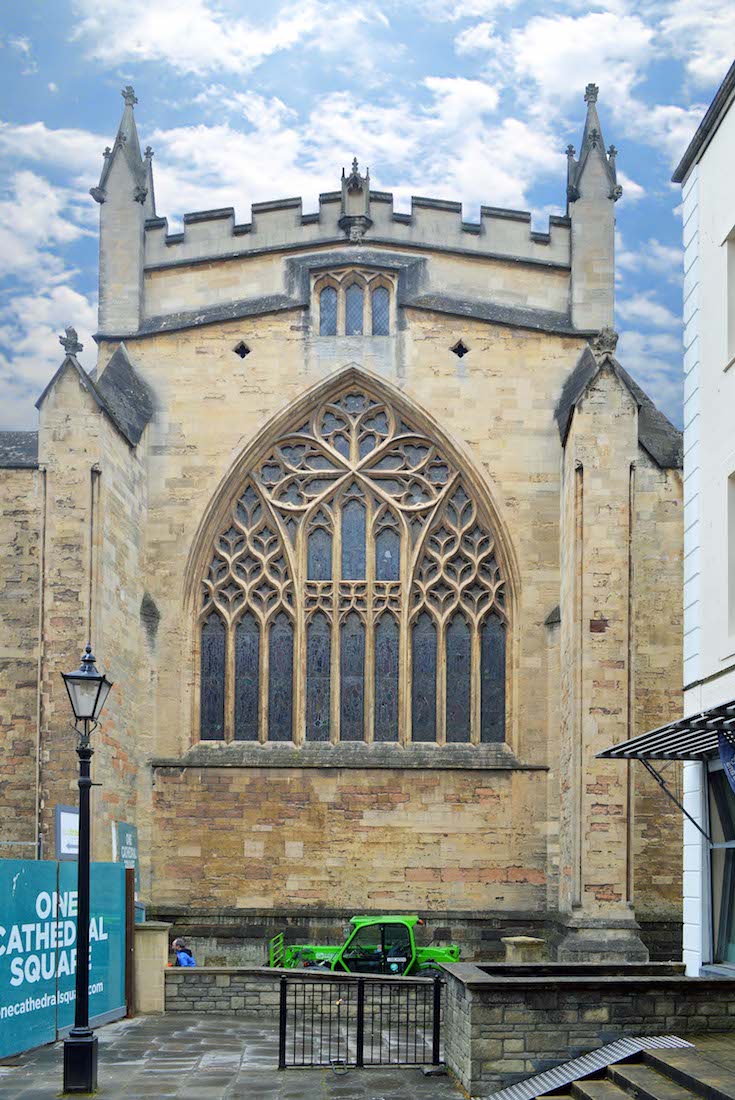
I first approach Bristol Cathedral climbing up the steps on the East side: not the best first impression! A high wall, and then this close view of the East wall of the Lady Chapel. • Bristol (Anglican) Cathedral was formerly the Cathedral Church of the Holy and Undivided Trinity. Founded in 1140 and consecrated in 1148, it was originally St Augustine’s Abbey but after the Dissolution of the Monasteries it became in 1542 the seat of the newly created Bishop of Bristol and the Cathedral of the new Diocese of Bristol. PLAN
2. NORTH VIEW
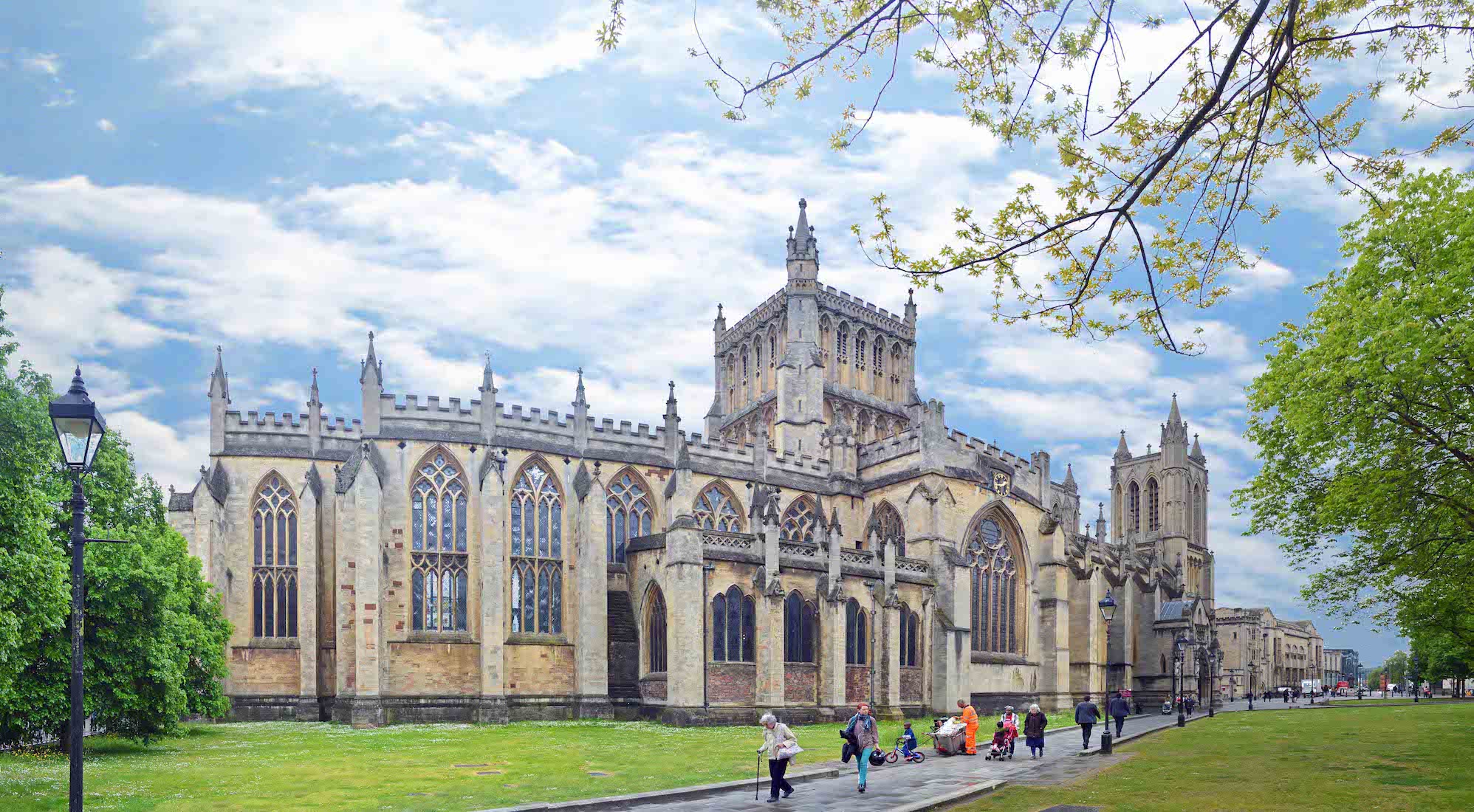
The narrow Eastern path emerges out onto College Green – a large lawned area which sets the Cathedral off beautifully. We notice the North transept projecting from the large square central tower, and on this side, the Elder Lady Chapel. • The Eastern end of the Church includes fabric from the 12th century, with the Elder Lady Chapel which was added in the early 13th century. Much of the Church was rebuilt in the English Decorated Gothic style during the 14th century despite financial problems within the Abbey. In the 15th century the transept and central tower were added.
3. FURTHER WEST
We walk across College Green to the West, passing the transept. The North door and the West towers come into view. • The nave was incomplete at the Dissolution of the Monasteries in 1539 and was demolished. In the 19th century Gothic Revival a new nave was built by George Edmund Street partially using the original plans. The Western twin towers, designed by John Loughborough Pearson, were completed in 1888.
4. SIGNBOARD AND NORTH DOOR
The signboard gives a warm welcome to visitors, and outlines the busy Cathedral life. Shortly we shall enter the Cathedral by this door. • The Cathedral has tall gothic windows and pinnacled skyline. The Eastern end is a hall church in which the aisles are the same height as the Choir and share the Lierne type of Gothic vaulting. Most of the medieval stonework, is made from limestone taken from quarries around Dundry and Felton with Bath stone being used in other areas.
5. WEST WALL AND ABBEY GATE
Unlike many English Gothic cathedrals, Bristol’s West facade has a rose window above the central doorway. The carved tympanum above the West doors shows angels worshipping an empty niche! The Great Gatehouse, also known as the Abbey Gatehouse, is an historic building. Its earliest parts date back to around 1170. It was the gatehouse for St Augustine’s Abbey. The statue is of Indian reformer Raja Rammohun Roy, who challenged traditional Hindu culture and fought for women’s rights.
6. SOUTH NAVE
We continue our (attempted!) circuit, coming down into Cloister Court – now sadly relegated to a carpark. An extension to the South transept connects the Cathedral to the chapter house and café. We shall later appreciate the stained glass windows facing out onto this court. • The late Norman chapter house contains some of the first uses of pointed arches in England. The Cathedral contains several significant memorials and an historic organ. Little of the original stained glass remains, with some being replaced in the Victorian era and further losses during the Bristol Blitz.
7. RETRACING OUR STEPS
We seem to be thwarted in our circuit of the Cathedral, and retrace our steps from the Cloister Court. Time for a reflective view! • Several of the bells in the crossing tower were cast in 1887 by John Taylor & Co. However, earlier bells include those from the 18th century by the Bilbie family and one by William Purdue III & Richard Purdue II made in 1658. • In 1994 the ceremony took place in Bristol Cathedral for the first 32 women to be ordained as Church of England priests.
8. NORTH DOOR
The niches around the north porch originally held statues of St Gregory, St Ambrose, St Jerome and St Augustine, but their frivolous detail invoked letters of protest to their ‘Catholic’ design. When the Dean, Gilbert Elliott (1800–1891) heard of the controversy, he employed a team of workmen without the knowledge of the architect or committee to remove the statues. A scene of the coming of the Magi can now be viewed above the door. Just below the scene is a wonderful gold cross.
9. NORTH PORCH
This entry to the Cathedral is through a spacious porch which provides shelter from the weather and protection for the West nave. A sign welcomes us to a place of prayer and worship.
10. SECRET DOOR
As we enter through this doorway, the base of the Northwest tower containing the shop is on our right. But to our immediate right in the wall is this enticing (but locked!) door. The brass plate reads: ‘To the glory of God, the bells from the ancient Temple or Holy Cross Church in this city, destroyed on 24th November 1940, were renovated and hung in this tower by the munificence of Dianne Violet Wills DBE & rededicated on the Feast of St Andrew 1958.’ The ruins of the old church can still be seen.
11. WEST NAVE AND ROSE WINDOW
We stand in the central aisle of the nave and look back towards the double West doors. The back wall has some carving, and above is the rose window. The rose window was designed and made in 1877 by Hardman, one of the world’s leading manufacturers of stained glass at the time. The central roundel depicts Christ in Majesty, surrounded by angels praising and playing music, joined round the outside by people working in various arts, crafts, professions and trades.
12. TWO TOMBS
An elaborate tomb stands to either side of the West entry. The left tomb has a Latin inscription, but seems to be known as the Graf tomb. I can find no reference to Graf, although an Urs Graf created one of the misericords in the Choir. The tomb at right bears the names of Sir John and Margaret Young. Sir John Young (1519 – 1589) was an English politician. A couple of voluptuous angels are giving him support! Between is shown a detail of one of the West doors.
13. WINDOW OF SOUTHWEST TOWER
This is the South window of the Southwest tower room. Four saints are depicted here: St Ambrose, St Athanasius, St Chrysostum and St Jerome. These are four of the so-called Church Fathers – leaders who played an important role in the development of the early Church. This room is where the baptismal font is located, but unfortuantely during my visit the area was closed to the public.
14. NORTHWEST TOWER WINDOWS
The ground floor room of this tower is where the Cathedral shop is located. There are two interesting windows here which depict eight prominent Bible characters – four Old Testament prophets, and the Four Evangelists. From left we see: Isaiah, Jeremaiah, Ezekiel, Daniel; St Matthew, St Mark, St Luke and St John.
15. NAVE
This part of the Cathedral dates from the late 1860s. The original medieval nave was lost, and after the church became a Cathedral in 1542 it functioned without a nave for the next 300 years. However, in 1868 a replacement, in the Gothic Revival style was designed by G.E. Street. The nave is flanked by two aisles, which are the same height as the nave, and mirror the architecture of the medieval hall church at the east end of the building. The aisles lead down to the North and South transepts.
16. NAVE VAULTING
We see here the nave vaulting, and the roof structure above the North entry. The nave is 125 feet (38 m) long and 52 feet (16 m) high. Because of the lack of a clerestory, the vault is comparatively low, being only about half the height of that at Westminster Abbey. The interior of the cathedral appears wide and spacious.
17. NORTH NAVE WALL
The North nave aisle stretches away, East of the North entry. Supporting arches link the outer wall and the inner columns. The windows are large to let in as much light as possible, and below in the small arches, notices and information about the Cathedral are displayed.
18. NORTH NAVE WINDOWS
There are four windows along the North side of the nave. Here is some of the most recent stained glass in the Cathedral, created by Bristol artist Arnold Wathen Robinson following damage during the Bristol Blitz of 1940 and 1941. From left we see depictions of local Civil Defence during World War II : • Nursing Services / St. John Ambulance, • Fire Services / British Red Cross Society, • Bristol Police / Wardens Services, • Womens Volunteer Services / Home Guards.
19. ALONG THE NORTH NAVE AISLE
In these views, the display pattern in the lower arches continues until the final arch, where there are some plaques and a memorial. Beyond this is a rosette and a flag. On the column opposite, above the grand piano are various plaques including a blue ‘panel’ which we will look at later. An elevated (but inaccessible) walkway with little tunnels is an enticement for young (and not so young!) men..
20. IN MEMORY
The Roll of Honour at left lists the names of wardens killed in Bristol in the 1940 bombing. The tomb memorial commemorates Gilbert Elliot, who was Dean of Bristol Cathedral from 1850 – 1891. This included the time in which the nave was being built.


